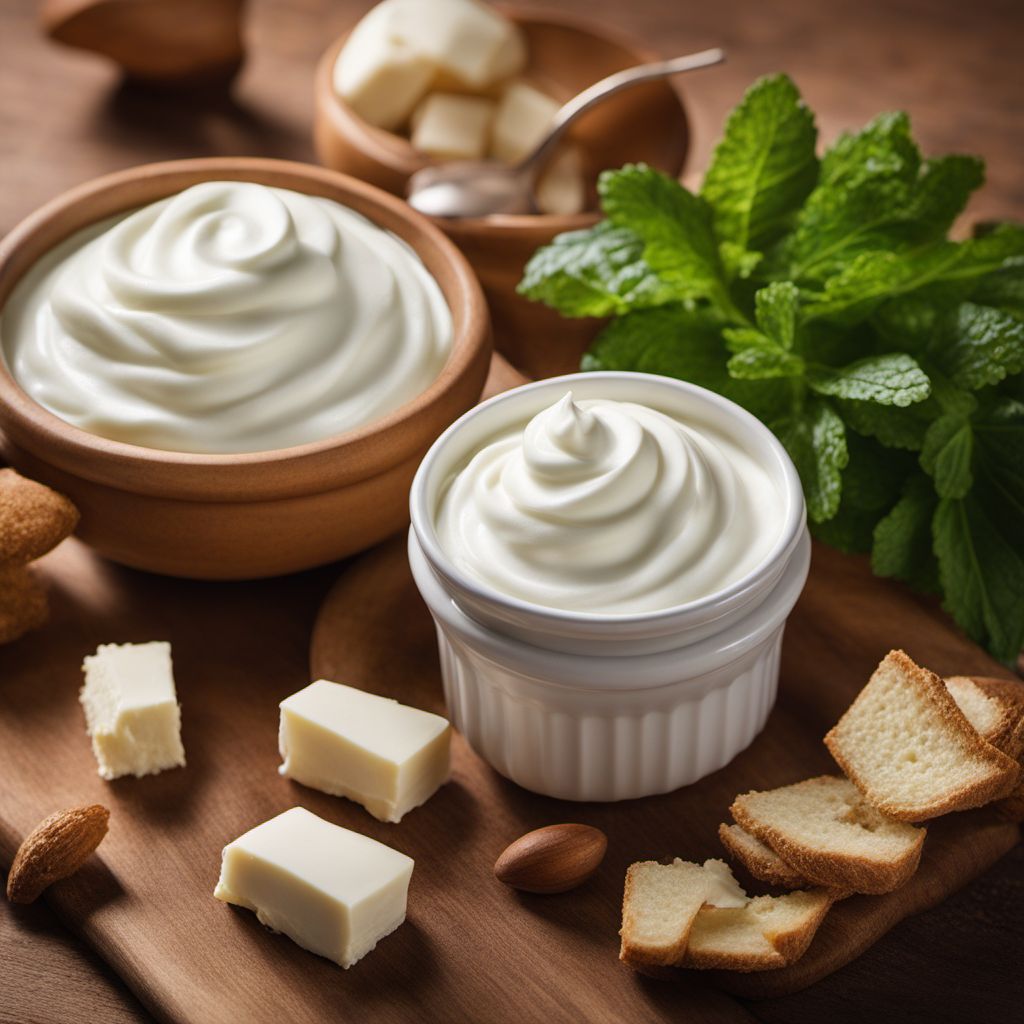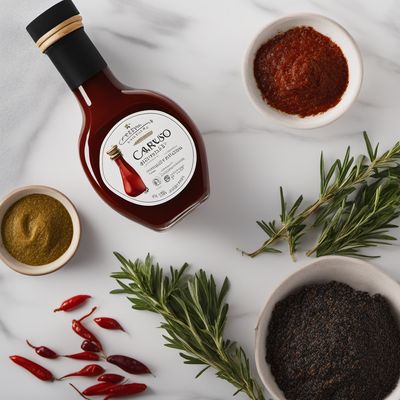
Ingredient
Créme fraiche and other mild variants of sour cream
The Creamy Delight: Unveiling the World of Mild Sour Cream Variants
Créme fraiche and other mild variants of sour cream are dairy products made by fermenting cream with lactic acid bacteria. They have a smooth and velvety texture, similar to regular sour cream, but with a milder and less tangy taste. The color of créme fraiche can range from off-white to pale yellow, and it has a slightly thicker consistency compared to traditional sour cream. These creamy delights are often used as a topping, a base for sauces, or as an ingredient in baked goods to enhance their flavor and texture.
Origins and history
Créme fraiche originated in France and has been a staple in French cuisine for centuries. It was traditionally made by allowing unpasteurized cream to naturally ferment, resulting in a thick and tangy cream. Over time, pasteurized cream became more commonly used, and the fermentation process was controlled to achieve a consistent flavor and texture. Today, créme fraiche is enjoyed worldwide and has become a popular ingredient in both traditional and modern recipes. Mild variants of sour cream, such as Mexican crema and Russian smetana, have their own cultural significance and are widely used in their respective cuisines.
Nutritional information
Créme fraiche and other mild variants of sour cream are rich in fat and calories, providing a good source of energy. They also contain essential nutrients such as calcium, vitamin A, and protein.
Allergens
Dairy is a known allergen associated with créme fraiche and other mild variants of sour cream.
How to select
When selecting créme fraiche or other mild variants of sour cream, look for products with a smooth and creamy consistency, free from any lumps or separation. Check the expiration date to ensure freshness, and opt for organic or locally sourced options when available.
Storage recommendations
To maintain the freshness and quality of créme fraiche and other mild variants of sour cream, store them in the refrigerator at temperatures below 40°F (4°C). Keep them tightly sealed to prevent any absorption of odors from other foods.
How to produce
While producing créme fraiche or other mild variants of sour cream at home requires specific cultures and fermentation techniques, amateur cooks can try making a similar substitute by combining heavy cream with a small amount of buttermilk and allowing it to sit at room temperature for 24-48 hours until thickened.
Preparation tips
Créme fraiche and other mild variants of sour cream can be used as a topping for soups, stews, and tacos, or as a base for creamy sauces and dressings. They can also be incorporated into desserts, such as cheesecakes and panna cotta, to add a tangy twist. When using them in hot dishes, it is important to add them towards the end of cooking to prevent curdling. For a lighter alternative, you can mix créme fraiche with Greek yogurt to reduce the fat content while maintaining a creamy texture.
Substitutions
Greek yogurt or a mixture of Greek yogurt and regular sour cream can be used as substitutes for créme fraiche and other mild variants of sour cream. These alternatives will provide a similar tangy flavor and creamy texture.
Culinary uses
Créme fraiche and other mild variants of sour cream are commonly used as toppings for baked potatoes, tacos, and chili. They can also be incorporated into creamy pasta sauces, salad dressings, and dips. In desserts, they add richness to fruit tarts, cakes, and ice creams.
Availability
Créme fraiche and other mild variants of sour cream are commonly available in most grocery stores and supermarkets, especially in regions with a strong culinary culture.
More ingredients from this category
Recipes using Créme fraiche and other mild variants of sour cream » Browse all

Tlacoyo with Black Bean Filling
Hearty Tlacoyos: A Flavorful Delight from Mexico

Classic Strawberry Fraisier
Strawberry Delight: A French Pastry Masterpiece

Texan-style Paprika Chicken
Smoky Paprika Chicken with a Texan Twist

Nouvelle Cuisine Pierogi
Elevated Polish Dumplings: A Nouvelle Cuisine Twist on Pierogi

Swedish Hönökaka with Creamy Dill Sauce
Savory Delight: Creamy Dill Hönökaka - A Swedish Culinary Gem

Tarte Flambée with Caramelized Onions and Gruyère Cheese
Savory French Delight: Caramelized Onion and Gruyère Tarte Flambée

Caruso Sauce with a European Twist
Savory European Caruso Sauce: A Fusion of Flavors

Lička juha (Croatian Mushroom Soup)
Savory Delight: A Taste of Croatia in a Bowl

Carne Asada Tacos
Tacos de Boeuf Grillé

Haute Cuisine Pierogi
Elevated Polish Dumplings: Haute Cuisine Pierogi

Russian Chicken and Mushroom Pie
Savory Delight: Russian Chicken and Mushroom Pie

Danish Stjerneskud - Shooting Star
Nordic Delight: Danish Stjerneskud - A Seafood Extravaganza

